Podcast: Play in new window | Download
Subscribe: RSS
This week I have the tall order of writing about great writing – writing copy that captivates and converts. No pressure. Easy, right? Did I say writing enough times?
You’ve heard this endlessly, I’m sure. The same old advice. “Hey, you want good results? Create amazing content!” Oh ok. No problem. So, I just need to make amazing content. OK. How hard could that be?
Think of all the content out there. Now think of all the content that is good. Now think of all the content that is amazing. Intimidated yet?
It’s all well and good to just say, “Hey, write amazing copy and you’ll draw people in.” But what does that even mean? How is that good advice? What is considered amazing and how do you write it?
The good news – it’s not nearly as complicated and impossible as I just made it sound. If this turns out to be a boring slog of a read, please feel free to roast me.
So, what goes into that awesome sauce? Let’s find out.
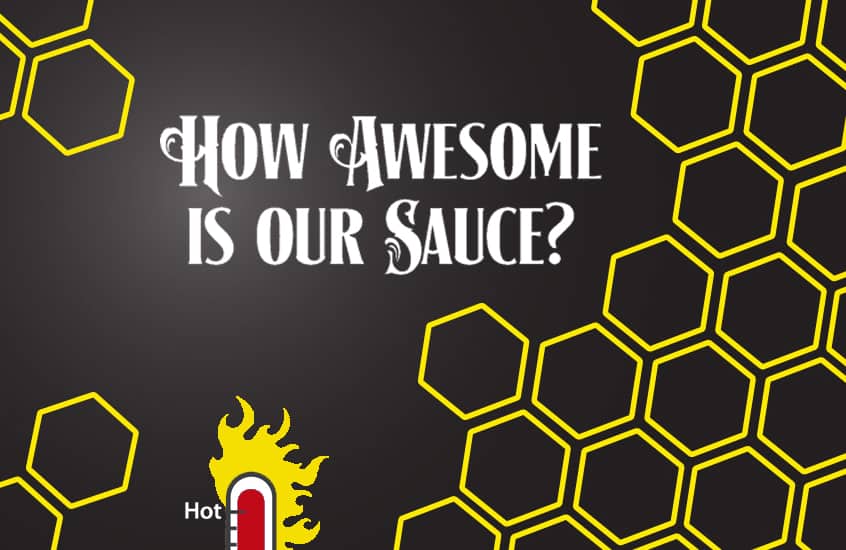
Check out the video or podcast above where Dan and the Bees discuss some great methods for writing copy that converts, using examples from their own work, as well as articles from leading marketing gurus and platforms.
Subscribe to our weekly live stream on Facebook, or take it on the go with a podcast on your choice of platforms. Keep up-to-date on news, trends, and tips in the world of digital marketing and join in on the conversation.
What’s New?
We haven’t been inundated with social media drama this week. That’s new, right?
There have been some interesting new innovations in some of the tools and platforms we use, though!
- Slack Launches Slack Connect – Slack was already an awesome internal communication tool with great security for businesses. Now they’re expanding to external communication with the potential to collaborate with up to 20 different organizations at once. They’re aiming to change the way we communicate by making it easier than ever.
- Google’s Rich Results Test is out of beta – We touched on this topic in our recent blog post on Zero Click Google Searches, and now Google has announced the Rich Results Test tool is officially out of beta and will replace Google’s Structured Data tool.
- LinkedIn’s New Name Pronunciation Tool Can Make Your Communication More Effective and Inclusive – This is self-explanatory and awesome. Pretty great new tool, especially living in such a culturally diverse community as Waterloo Region.
- YouTube to Offer More In-Video Ads, Boosting Ad Space and Lowering Cost – Great news for businesses and marketers! Maybe not so much for viewers. Unless we get some highly creative and entertaining ads, of course!
- Introducing Instagram Reels: Instagram’s Answer to TikTok – Yep. You can record 15-second clips set to music on Instagram now. Will it be able to tap into the phenomenon of how many billion users TikTok has? Let us know what you think in the comments below!

What’s Working?
So I guess I should probably get to the “how-to-write-good” part. WELL. Where do we start. Ahem. You know where. Same as always. The beginning.
Do Your Keyword Research
Before you start writing, even before the headline, you’re going to want to do your keyword research. This will make a huge difference in how your content ranks with Google.
There’s plenty of awesome tools out there to use, like Screaming Frog or SEMrush.
Or even using the Google Search to see what keywords and keyword phrases come up first –

and those that are displayed at the bottom of the search page in the “Searches related to” section.
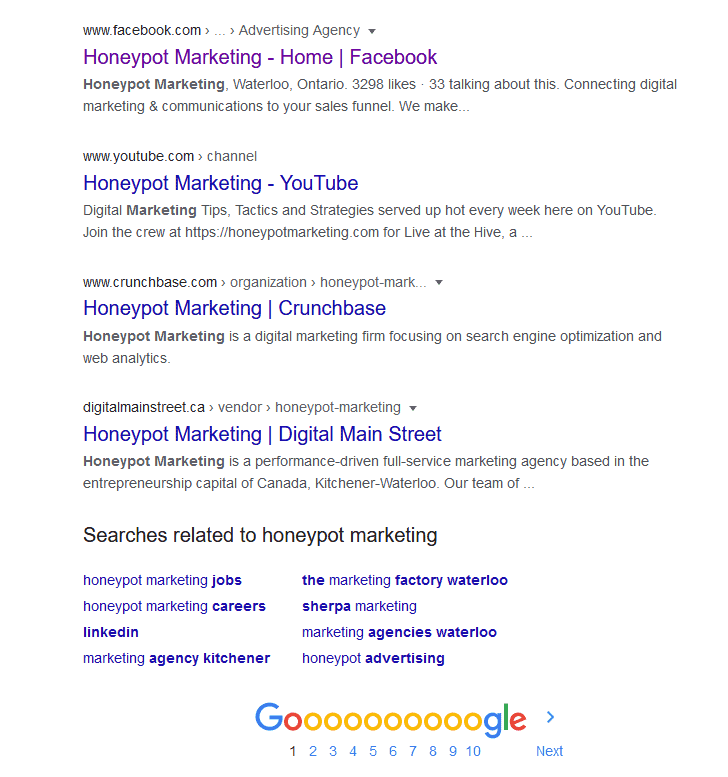
Using these tools, you can determine the best keywords for your content and use them when writing your copy to help you rank higher as an authority for those search terms.
Here’s a quick list of tips for helping with keyword research:
- Make good use of negative keywords – this can dramatically reduce ad spend and increase conversions by removing the searches that are similar, but not relevant to your business. (for example: you’re selling high fashion lambskin leather jackets and you’re getting clicks for “leather jackets” from people looking for biker jackets, only to be disappointed – but you’re still paying for those clicks.)
- Add your competitors to your negative keyword list.
- Target long-tail keywords with a high quality score (over 10).
- Keep everything including your keywords, ad copy, and landing page synchronized, and don’t mislead your audience at any point.
- Focus on phrases that read as questions, and answer those questions to give immediate value.
- Add location to your keywords.
The Headline
This is incredibly important, and quite often the make or break element that’s the difference between someone clicking on your content and someone ignoring it.
For example:
Writing Good Headlines is Hard. Click Here to Get Better.
If your headline reads something like this, no one is clicking on it unless they had already intended to buy something from you – or they owe you a favour.
(Also, how many people tried to click that headline? It’s fine. Just admit it to yourself. No one needs to know.)
Before I even start brainstorming ideas, I need to really think about my intentions, my message, what I’m trying to say.
I want to tell people about a blog I wrote about writing copy that converts.
Now I need to think about the reader. Who are they and why do they want to read my blog? See the above headline. Sorry, that’s lazy. You’ll get over it.
In other words, you need to create a persona – or personas, depending on your target audience – so that you better understand who they are and what they want.
So how do I make that headline good, now that I’ve taken into consideration what I want to say, and recognized that the reader’s pain point is the difficulty in writing copy that really captivates?
How about turning it into a question:
Who Else Wants to Know the Mystery Behind Writing Killer Headlines?
Or making it an ever-popular list with something unexpected thrown in:
23 Ways to Write Killer Headlines With One Hand Tied Behind Your Back
Or the very title of this blog here that you’re reading. To the point, with a little fun thrown in. You clicked on it. Maybe. Probably.
Here are some more resources to help you get started with writing your own killer headlines:
- How To Write Perfect PPC Headlines In 5 Easy Steps
- Headline Writing 101: How to Write Attention Grabbing Headlines That Convert
- How to Create Winning Headlines in 9 Simple Steps
- 9 Steps to Write Your Ultimate Home Page Headline
How to Write Copy That Captivates
Here we go. Into the thick meat of it. Sorry vegetarians. Please imagine a thick slab of finely seasoned seitan, instead.
The one thing you definitely never want to do is try to tap into the pulse if you can’t actually feel it. It will be painfully obvious and if you’re lucky, the only thing that will happen is you’ll get memed into the joke of the week.

Stick with what you know, and where you specialize.
Writing copy that converts is challenging. An easy way to deal with it is to freakin’ relax. Be a person, and act like you’re talking to a person.
I’m imagining you, dear reader, right now as I write, and then I read it back in a weird accent and try to see it as you will see it.
(Not that you have a weird accent, it’s just fun to make silly voices, right? I’m not alone here. Don’t judge me.)
Some key things to consider when writing copy:
- Write for one reader – You. Reading this right now. I’m writing this for you.
- Speak their language – Que voulez-vous dire? Use your customer’s voice, tone, style of speaking.
- Use headers.
- Use short words and sentences – KISS. Keep It Simple, Stupid.
- Use bullet points.
- Fonts matter – fonts set the tone, so don’t use comic sans unless you’re making a homemade birthday card for your 5-year-old child. Don’t ignore design.
- Use visuals.
- Break long blocks of text into smaller chunks for easier reading and visual flow.
- Get specific – Advertising copy is full of unfalsifiable, blanket claims. Be specific. You can’t bs specifics.
- Know your medium and channel – the medium is the message, right.
- Provide a clear, immediate call to action.
- Test everything.
I know, I know. You want examples. Fine. Let’s do this.
Which of these 2 copy examples do you find more captivating:
Get a discount on these great wireless headphones by filling out this form now!
or…
We’ve saved you a special discount on your next set of wireless headphones. Put up your tired feet, untangle your old pair to give them a final, loving sendoff for serving you well, and tune in to your favourite song or podcast while you fill out this short form.
So, what did I do there? I made it more engaging by speaking directly to the reader, by addressing a pain point and showing empathy, demonstrating that I understand their situation.
Let’s take a look at some real examples of posts we’ve written here at Honeypot, and break down what they’re doing right. We’ll look at both organic and PPC ad posts to give you a good range of styles and strategies.
Organic Posts
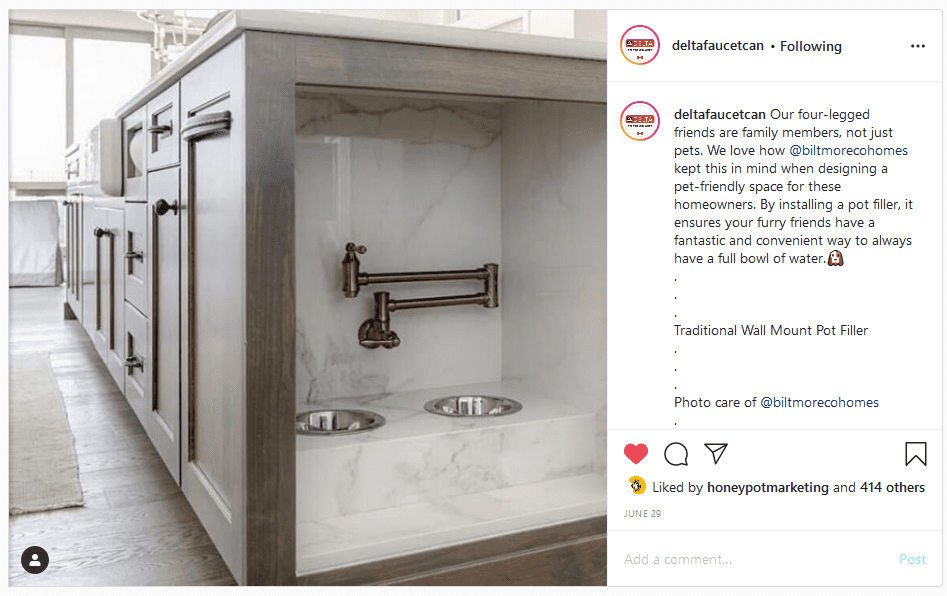
Pot FIller for you Dog – Delta Faucet Canada
Between the image and the copy, we were able to showcase the versatility of the product. Proving that pot fillers aren’t just for making pasta, but can make it easier for your dog to always have a fresh bowl of water. Yay doggo!
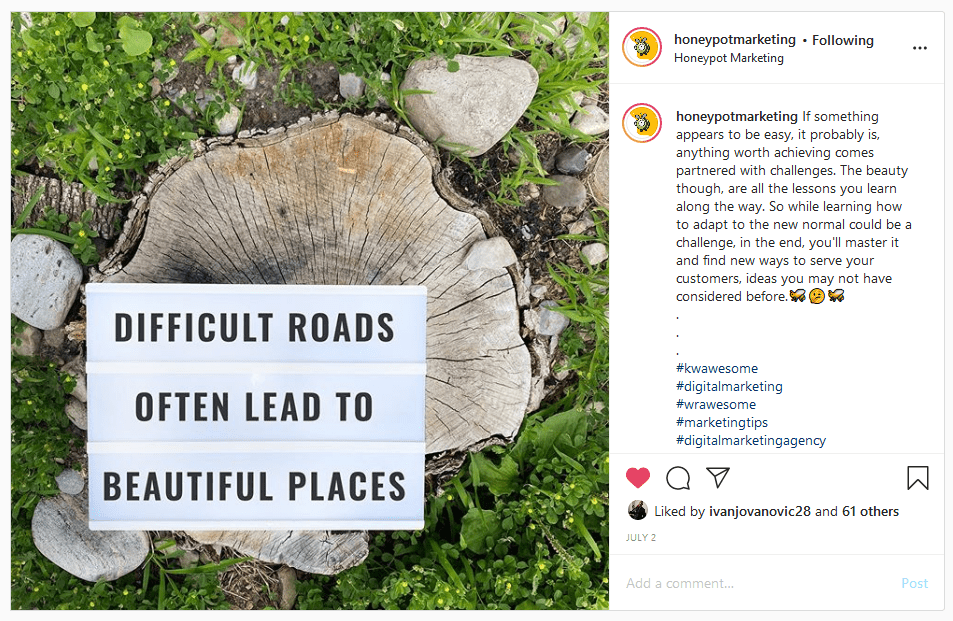
Lightbox Inspiration – Honeypot Marketing
The image isn’t only lovely, but it’s accompanied by copy that really resonated with the KWAWESOME community, especially during the height of COVID-19 when many small businesses were struggling.

One of the top Facebook organic posts for Delta Faucet Canada was this one on how to pick a bathroom faucet.
We repurposed their content and made it an easy to follow instruction guide. Then we posted it on Friday before a weekend to inspire the weekend warriors. We didn’t sell the product but instead talked about how we were providing free information so consumers could make an informed choice.
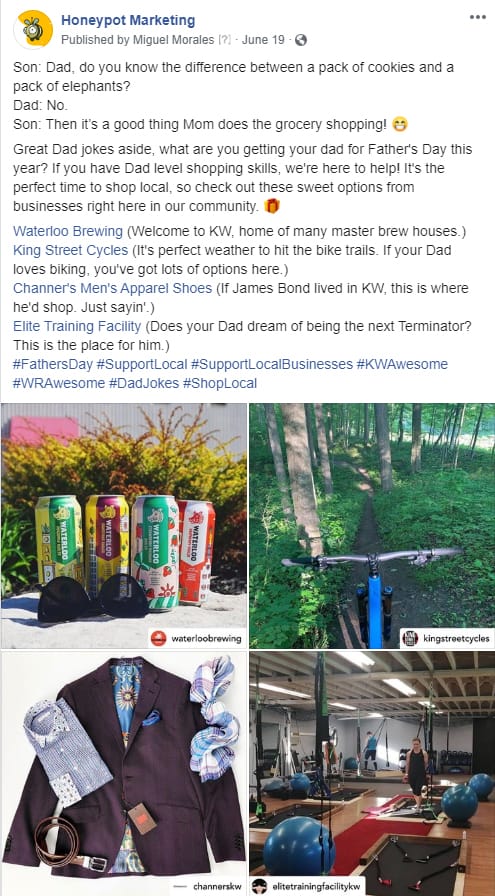
Here’s a popular one on Honeypot’s Facebook.
It’s a good use of humour and encourages readers to stop and read in the feed. We were also able to tag other businesses that shared the content. Who doesn’t love a good (bad) dad joke?
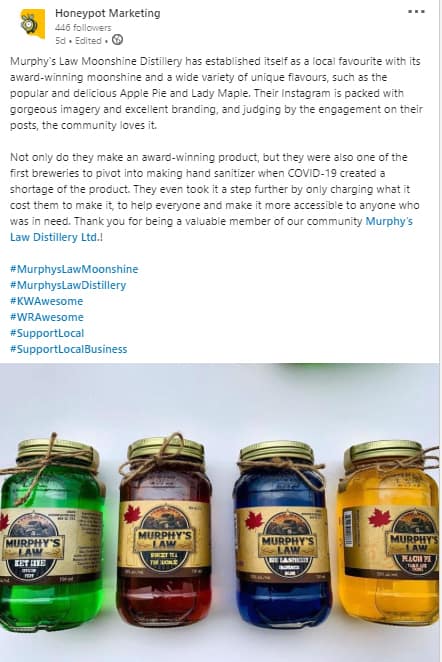
This is a good example of a longer form LinkedIn post via Honeypot that received good engagement.
Longer form content performs well on LinkedIn if it’s told through the context of a story. Make sure you add hashtags. Also, tagging the business mentioned helps to improve the reach of this post.
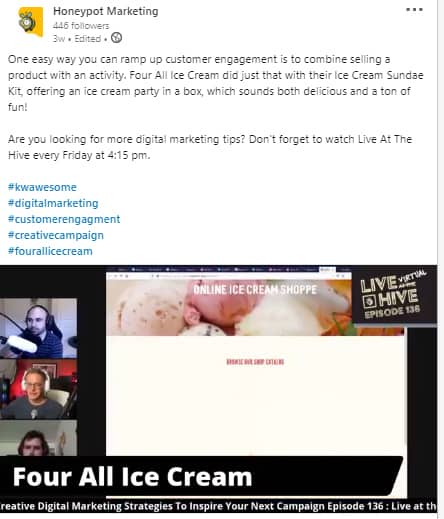
This post performed great on LinkedIn.
It shared a useful tip with a video clip from the show. It also achieved greater reach because it was tagging another local business. The copy is straight and to the point, offering the tip and the option to watch to learn more.
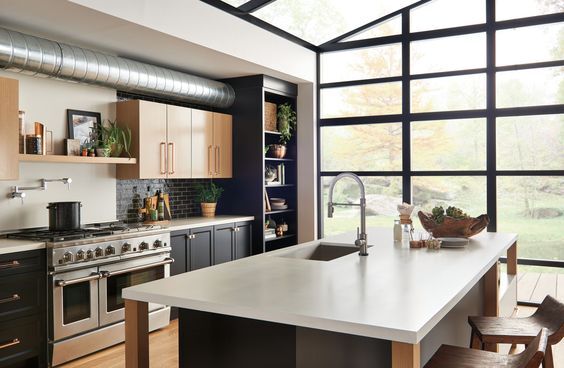
Delta Faucets – Pinterest
6 Kitchen Upgrades That Make Grown Chefs Cry
Are you thinking about updating your kitchen? Then you’ll want to make sure you renovate the right things that will take your meal-making to a new level. We’ve compiled the 6 items that you’ll want to renovate to create a top-notch kitchen. #kitchen #deltafaucet #faucet #fridge #stovetop #stove #potfiller #knobs #handles #chef #meals #cooking #renovations #kitchenreno #kitchenupgrade #makeover #renovate #newlook #happycookhappylife
This post has a great headline and the copy reads in a very conversational tone. Also, lists. Everyone loves lists.
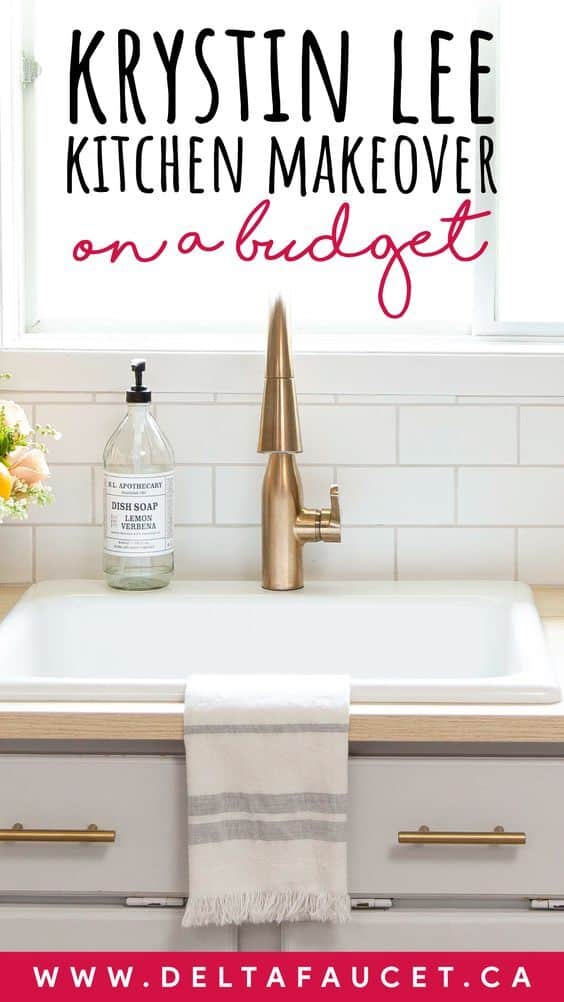
Here is another Delta Faucet post that performed well on Pinterest. Note how it acknowledges the importance of the kitchen and the emotional attachment we generally have toward it.
Your kitchen is the heart of your home, and maybe you are looking for ways to add a nice touch-up. #krystinlee has some great ideas on how you can provide your kitchen with a makeover, all on a budget. #KitchenMakeover #Kitchen #Makeover #KitchenRemodel #NewLook #HomeDecor #WhiteKitchen #HeartOfYourHome #KitchenRevamp #NewKitchenWhoDis #Remodel #Revamp #BudgetKitchenMakeover #Budget #DecorLifestyle #Lifestyle #Home
PPC Posts
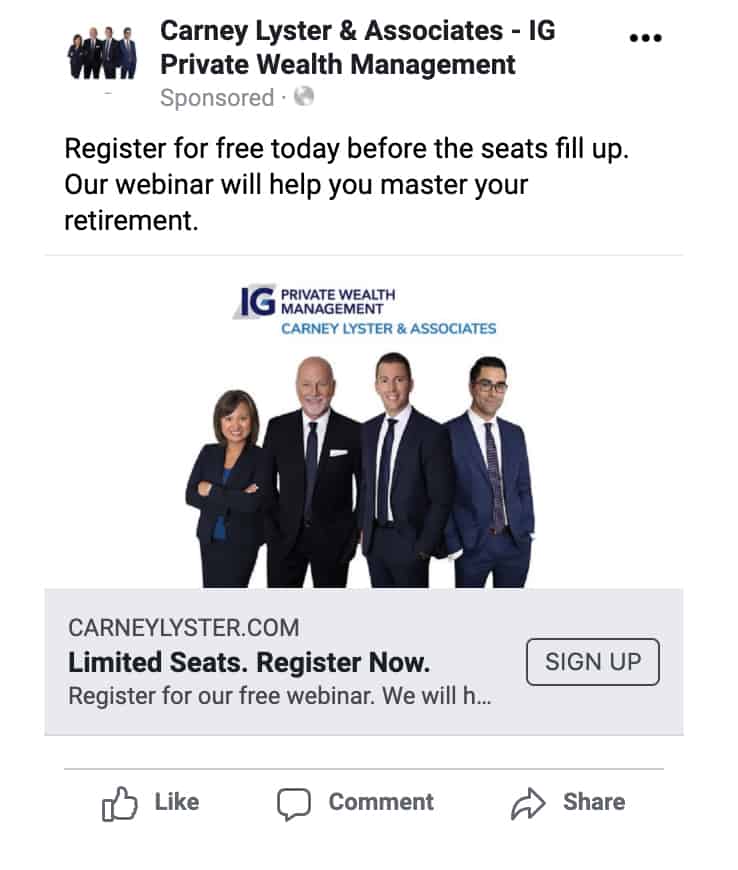
This ad succeeded by creating a sense of FOMO (fear of missing out) – making something seem more desirable because it is in small supply.
We were promoting a free webinar for our client on Facebook ads. The campaign was running for 1.5 weeks before the webinar date. Here are the campaign metrics: (June 12 – June 17, 2020)
- Reach: 2,472
- Impressions: 3,305
- Unique Click Links: 24
- Results / Registrations: 4
After we updated the messaging to instill that sense of FOMO, there was a significant increase in the performance of the campaign. (June 18 – June 23, 2020)
- Reach: 5,890
- Impressions: 10,205
- Unique Click Links: 63
- Results / Registrations: 10
Examples of the Messaging:
- “Space is limited! Sign up now.”
- “Limited Seats. Register Now.”
- “Limited Seats. Register Today.”

Customer testimonials are a tried and true method of enticing potential customers on digital platforms. Testimonials from friends, co-workers, and people we trust reduce feelings of risk. They build confidence in the brand.
The ad is currently running on Facebook. It has 5 purchases at a cost/ conversion of $12.66.
That’s probably enough real-world examples. Let’s move on to one final tip.
Make Higher Converting Landing Pages
Landing pages are one of the best ways to get conversions, but you don’t just want to slap a landing page together and just hope that people will sign up.
You also don’t want to just focus on a portion of the funnel. You want to consider the whole customer journey.
Most post-click landing pages are pretty generic and are written in a very sales-y tone. Yep, I just created a new word. Roll with it.
The rules for writing copy for a landing page are generally the same as what has been covered above, but here’s a list because I just can’t help myself.
- A short, but captivating headline. Get straight to the point here. don’t be vague or tricksy. Tell people exactly what your intentions are, and what you’re offering.
- A subheading further explaining the details of why the reader should be interested, giving more context to the main headline.
- A quality image or video to draw attention and pique interest, as well as giving further information.
- A simple, brief form. Quite often this can just ask for the reader’s email. Quick and easy, low effort sign up. This is what you want. This is what your customers want.
- A strong, clear CTA. Make it obvious and attractive. Don’t make people search for a link or button. Make it as easy as possible for them.
- Short form copy is great when you have a simple message and a simple ask. Keep it succinct and to the point.
- Long form copy can work when you have a more complex offer, more things to consider, or a higher level of commitment. In the words of Neil Patel, or wherever he got it from, “The bigger the ask, the longer the page.”
- Test and iterate. A/B testing should be a part of all your copywriting strategies, always.
- Remove page navigation elements to avoid distractions.
- Never make the customer search for your product or message.
Here is an example of a simple, great landing page:

Here is a template showing the 5 main elements of a typical landing page. Keep in mind you don’t need to add this much content to your landing page. It’s entirely dependant on your business and offer, but it’s a great reference to have on hand when you’re putting your page together.
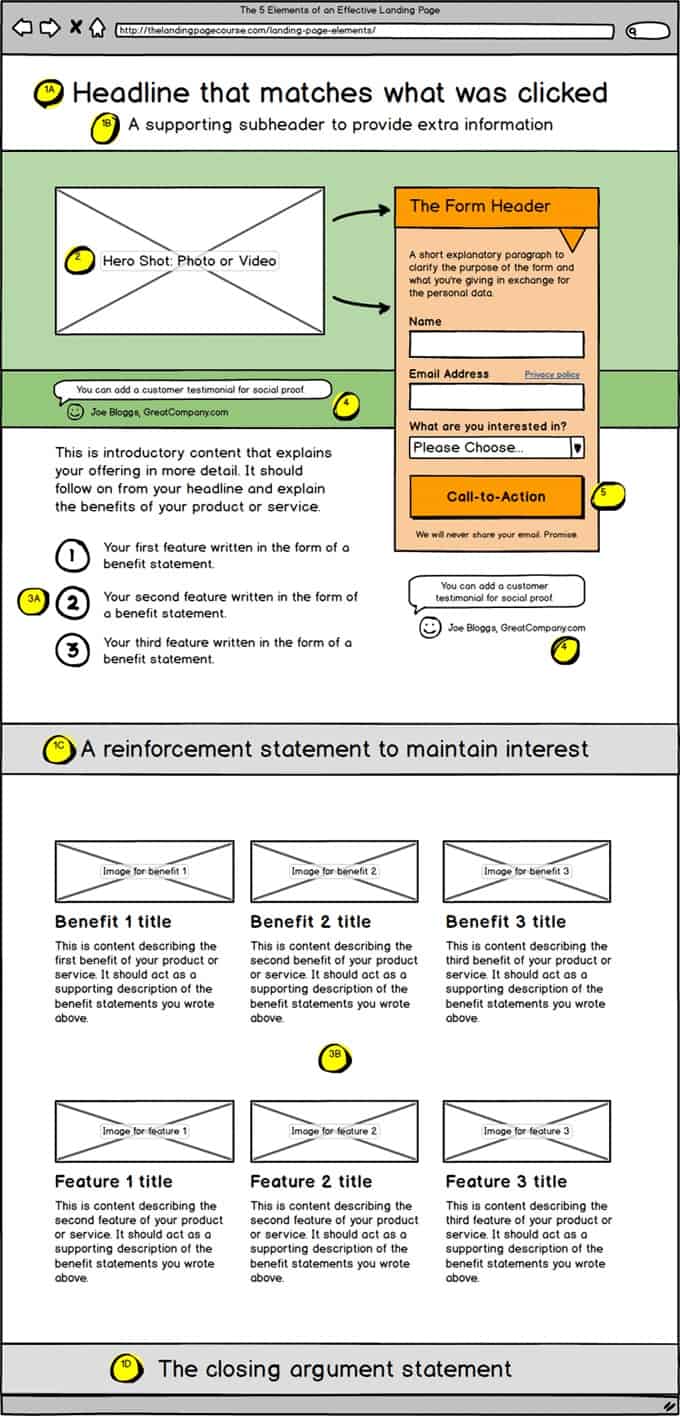
There are many tools you can use to build your landing page. Here is a list of a few. We use Unbounce at Honeypot quite often.
- Unbounce – A landing page builder you can use to build, optimize, and carry out A/B tests to determine what works and what doesn’t on your landing page.
- OptimizePress – Easily create landing pages, sales pages, and membership portals.
- PopUpDomination – One of the best pop-up opt-in box creators around. It works for beginners, intermediates, and online business experts as a landing page template with drag and drop ease.
- OptinMonster – A great exit intent tool that will help you capture emails and leads. It’s a flexible, yet very easy to use landing page template.
- Instapage – You can use Instapage to create a single professional landing page, 100% free. But, if you want more landing pages, you’ll have to upgrade to a paid version of this landing page builder.
And that’s a wrap. We hope you found these tips helpful and you’re now better prepared to get out there and create amazing content for the world to adore.
Thanks so much for reading, and I hope it was entertaining and informative enough for you to not roast me. Let us know in the comments below, or share some of your own tips and stories!
Until next time.


